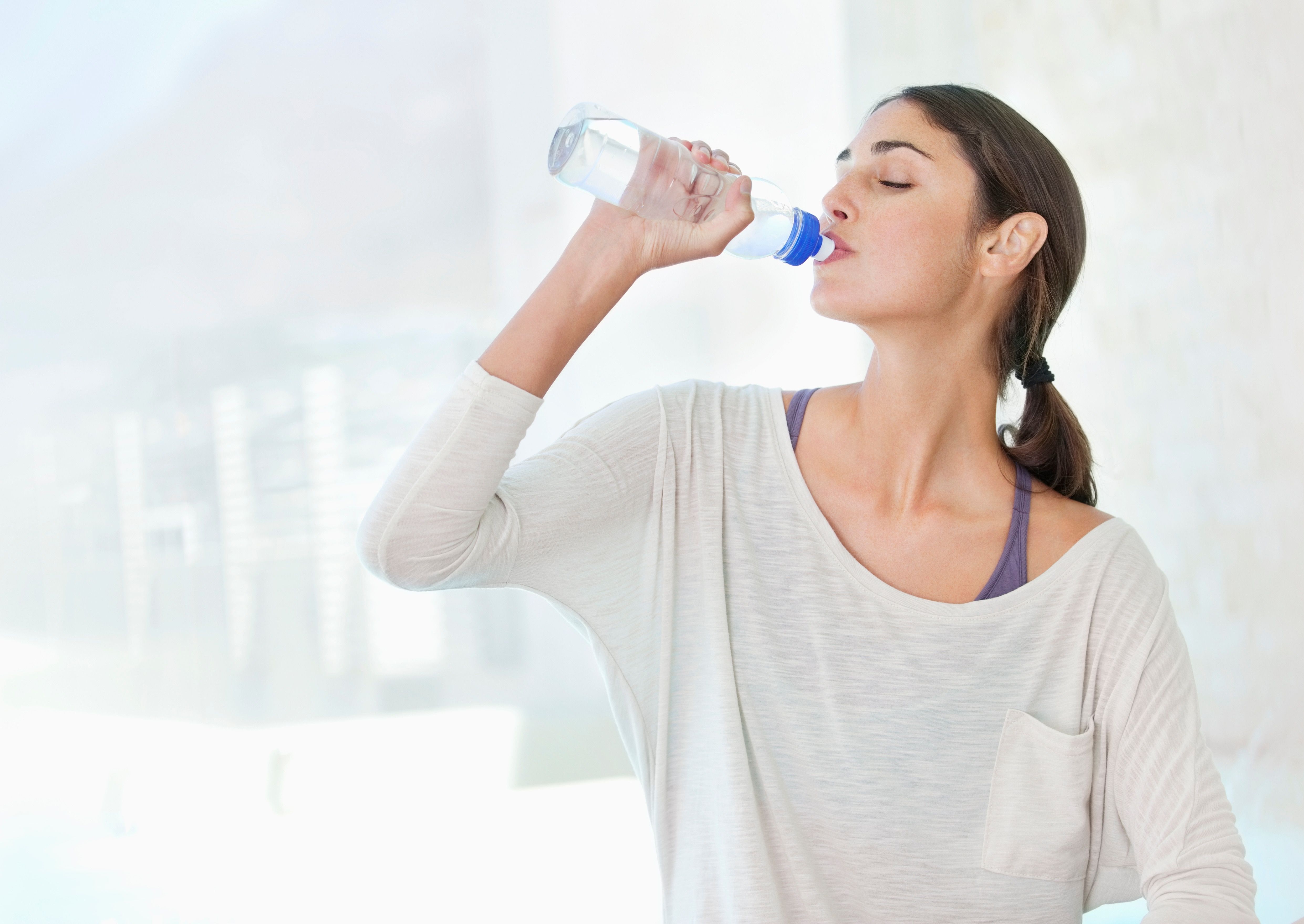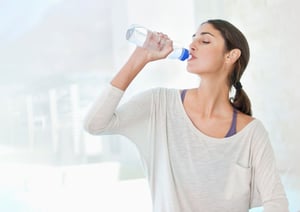Can Dehydration Cause Back Pain?
Dehydration has many adverse effects on your body such as a backache, fatigue, dry skin, blurry vision and many other symptoms.
Dehydration takes the water from the discs between every other vertebra in your spine causing your back to ache.
When these discs are not hydrated your spine takes the full shock of your body's movement resulting in your back hurting.
If you are experiencing back pain, you should see a chiropractor for back pain as soon as possible.
In this blog, you will learn about the relationship between dehydration and back pain, as well as ways to stay hydrated, and how to treat back pain.
Table of contents:
- Back pain and dehydration
- What you should know about dehydration and back pain
- 10 signs that you are dehydrated
- How can you tell if you are dehydrated?
- Tips to help you stay hydrated
- Fix back pain at Arrowhead Clinic
Although it's a surprise to most, dehydration can cause back pain.
Hydrating your body is a basic necessity for your body to fully function and feel good.
Therefore, dehydration causes your body to function below optimal levels, causing things like back pain.
When you're dehydrated, your body reacts negatively causing you to be crabby, faint, and completely shocks your organs, muscles, and bones.
It is essential that you take care of yourself and drink plenty of water.
Staying hydrated is key to maintaining optimal health.
Why you might ask? Why is water intake so important?
What You Should Know About Dehydration and Back Pain
The link between backaches and dehydration is in the small discs in your spine!
These little discs are jelly-like material that is close to 75% water.
The outer ring is called the Nucleus Pulposus, and the inner ring is mainly water.
Dehydration can cause back pain when the gelatinous material inside your discs lose water and are unable to hold the weight of your body.
This causes the disc to collapse which can put pressure on the sensitive nerves exiting the spinal column.
Between every two vertebrae in your spine, there is a disc and its primary job is to separate interlocking bones and provide cushioning, shock absorption, and mobility to the spine.
By the end of the day you are ¼ to a ½ inch shorter than when you work up in the morning.
You are shorter because of the water slowing releasing from the spinal discs.
You return to your normal height in the morning because while you are sleeping the discs rehydrate fully.
The discs try to hydrate throughout the day, but in the upright position, it is not as easy. Movement helps hydrate the discs during the day.

When people ask, can drinking water help with my back pain, the answer is yes! You need the water in your body for the spinal discs to rehydrate.
Not only do these little discs impact a very small part of your height but more importantly they affect your body’s daily function.
The jelly-like discs are between every two vertebrae and absorb the shock of your everyday movement protecting your spine from wear and tear.
If the discs are not adequately hydrated you not only shrink but they cannot protect or support your spine.
Causing more stress on the spine and eventually, it will swell, become painful and possible bulge the nucleus pilposis which is extremely uncomfortable.
Just think you need water for back pain because dehydration causes your spine stress and your body struggles to function.
10 Signs to Know You Are Dehydrated
Most of us know that dehydration happens when you don’t get enough water.
Your body is almost 60 percent water and uses it for breathing, digestion, and every basic bodily function.
You can lose water quickly by sweating too much on a hot day, or by exercising a lot.
Your body also loses water through too much urination. You can get dehydrated if you have a fever, are vomiting, or have diarrhea.
Dehydration can be serious. Fortunately, there are several ways to tell if you’re dehydrated.
You might have symptoms even with a little water loss because being dehydrated by even 1 or 2 percent can show signs and symptoms.
Here are ten common signs and symptoms of dehydration:
- Bad Breath
- Fatigue
- Confusion
- Anger
- Dry Eyes or Blurry Vision
- Headaches
- Muscle Cramps
- Dark Urine
- Dry skin
- Fever
How Can You Tell If You Are Dehydrated?
There are two simple tests to see if you are dehydrated: checking your urine or your skin.
Urine Check
When you use the restroom look at the color of your urine. If it is light, then you are well hydrated but if it's dark then you need to drink more water because you are dehydrated.
Skin Check
Pinch the skin on the top of your hand.
If the skin quickly goes back down and looks normal, then you are hydrated, but if it slowly returns to normal or stays pinched up, then you are dehydrated and need to start drinking more water.
You do not need to chug the water because it can upset your stomach just work on drinking the proper amount.
Most experts say if you drink half your weight in fluid ounces then you are taking care of your body’s needs and will stay hydrated.
Don’t wait until you are thirsty to drink water because by then you are already dehydrated. Continual drinking thought the day is best and easiest to maintain your body’s proper hydration level.
Sadly, too many people suffer from dehydration. According to the American Journal of Public Health, 29.5% of adults in the united states are not adequately hydrated.
They performed a study on hydration and found that lower-income adults are more likely to be dehydrated because they do not have access to safe drinking tap water. Most lower-income people drink less and drink more sugary drinks than water.
Up to 60% of an adult human body is made up of water and 90% of an adult’s weight is water, according to USGS.
Keeping these number in mind just images how hard it is on your body when you deprive it of water. Your body could potentially shut down, and you could die from dehydration.
It may seem hard for some people to drink enough but once you start making it a habit and experience the benefits of a healthy body, it will seem easy to drink enough water to stay hydrated.
Tips to Help You Stay Hydrated
The easiest way to stay hydrated is to drink more water. Over the years, experts have gone back and forth about how much water a person should drink and, unfortunately, there simply isn't a uniform standard for every single person.
However, a good rule of thumb, according to Harvard Health, is 4-6 cups a day if you're generally healthy. That said, you need to make sure that you're monitoring yourself because your behavior does have an impact on the amount of water you need.
For example, if you're outside on a humid summer day and you find that you're sweating a lot, it means that you're losing water at a quicker rate and should probably be drinking more to counteract dehydration.
You should drink even more water when you workout. Experts believe that it's possible for the average person to lose anywhere between 17-50 ounces of water for every single hour of exercise.
So when you workout, drink more than you might think is necessary.
Keep an Eye on Your Urine. That’s right, your urine is one of the most accurate ways to tell if your body is hydrated.
Creating urine is how the body naturally gets rid of waste products that can float around in the bloodstream and extracts toxins that build up in the kidneys.
According to Harvard University, when your urine is dark yellow or amber, it means that there is less water and more waste than usual and a pretty strong indication that you're not drinking enough.
If you're healthy and hydrated, your urine should be a pale yellow color.
Also keep in mind that when you drink more, you’ll likely start urinating more. For some, the added trips to the bathroom can be inconvenient, but over time you will adjust to your extra intake of liquid and you won’t need to go as often.
Drinking enough water throughout the day can seem like a daunting task, but it’s not as hard as it sounds.
If staying hydrated is difficult for you, here are some tips that can help:
- Keep a bottle with you during the day. To reduce your costs, carry a reusable water bottle and fill it with tap water.
- If you don’t like the taste of plain water, try adding a slice of lemon or lime to your drink.
- Drink water before, during, and after a workout.
- When you’re feeling hungry, drink water. Thirst is often confused with hunger. True hunger will not be satisfied by drinking. Drinking water may also contribute to a healthy weight-loss plan. Some research suggests that consuming water can help you feel full.
- If you have trouble remembering to drink, drink on a schedule. For example, drink water when you wake up, at breakfast, lunch, and dinner, and when you go to bed. Or, drink a small glass of water at the beginning of each hour.
- Drink water when you go to a restaurant. It will keep you hydrated, and it’s free.
Fix Back Pain at Arrowhead Clinic
After a few days of hydrating correctly, if you are still experiencing back pain, you should talk to a chiropractor.
If you're dehydrated, and that is causing your back pain, then hydrating should take the pain away.
If the pain persists, you have another underlying issue that a chiropractor can diagnose.
To be free of this pain, make sure to schedule a Free Consultation with the Arrowhead Clinic.
The expert chiropractors at the Arrowhead Clinic will do a full workup on your overall health.
Don’t keep ignoring your back pain, get the treatment your body deserves.
Click the banner below to schedule an appointment with one of our expert chiropractors today!
Next blog: Why Does My Back Hurt Worse After Visiting the Chiropractor?




